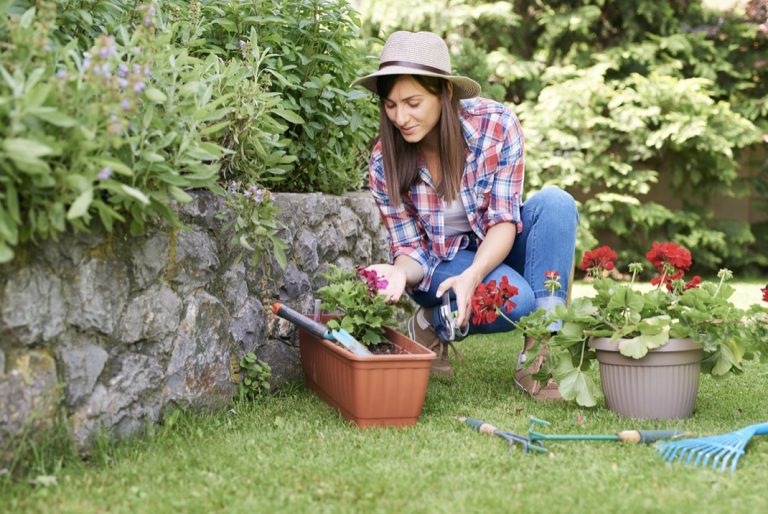As we age, we still want to experience the joys of independent living, but our homes often present challenges that make it difficult. If you’ve lived in one place for a long time, it’s likely that you’ve worked hard to make it a home and would prefer not to start over again. Instead of moving out, why not start adapting your house in simple ways, ensuring that you can stay for many more happy years? From low-cost equipment that gets you around securely, to developing the garden so that it requires less care, small changes could help you stay in control of your home and outdoor space.
Story Stages
Develop a low-maintenance yard
In the garden, your focus should be on creating a space that will be easy to maintain. Start with ground cover plants that will work to prevent weeds from spreading, and use evergreen trees as they will need less attention. Raised beds can be a good solution for gardeners who don’t want to keep kneeling or bending but enjoy the process of planting. Scented blooms offer fragrance on summer evenings and herbs have practical benefits for people who love to cook. Mowing the lawn regularly could become a chore, so consider switching to a paved courtyard garden or have artificial grass laid. You could leave some sections open for planting and soften the overall look with shrubs or containers, depending on the size of your garden.
Get professional advice
Getting a professional assessment of your garden could prove useful further down the line, as people who work in horticulture are more likely to spot potential problems. If you do ask them to complete any tasks in your garden, protect yourself by asking to see a certificate of insurance. Tree trimmers and general garden maintenance workers can purchase a tree trimming insurance policy in minutes. Reliable coverage will safeguard their business, along with you and your home, in the event of an accident or injury.
Adapt your home’s access points
Getting in and out of your home with minimal risk is essential. You can start by having a handrail fitted near the front door or use a ramp to cover any steps. If there is no roof covering your entry point, it’s worth having one fitted so that you aren’t exposed to the elements as you enter or leave. Answering the door can be a bind, but there are video intercom systems that allow you to see and speak with visitors on your smartphone before letting them in remotely. A tradesperson could fit one for you in a couple of hours, along with a light to brighten your frontage on dark nights. If you aren’t sure who can do this for you ask Citrus Heights Tree Experts for advice.
Getting around inside
A home that is well lit in rooms and hallways will always be easier to navigate. If you don’t want to worry about lights being left on, invest in motion sensor versions that are activated when you move close and switch off just after you leave. For people who anticipate mobility problems, wider door frames will allow you to move about when you are in a wheelchair or if you have a frame. A good carpenter will be able to plan the alterations and finish the work without affecting the stability of your home.
Make the bathroom a safer space
In the bathroom, a bath that opens to the side and has a seat can be fitted to keep you secure while washing. You won’t have to climb over the side to get in, and getting out is just as stress-free. Alternatively, how about having a wet room installed so that you can walk right up to your shower? There are no tripping hazards to deal with, and as access is all on one level, they are convenient for anyone with mobility issues. If you feel that the changes could create a clinical feel, think about a few cosmetic upgrades to keep your bathroom looking open and fresh.
Relaxing into bed effortlessly
Many of us can’t spring out of bed as easily as we used to, but raisers can be fitted to the underside of the frame or divan so that there is less distance to cover. You might also consider investing in a powered recliner bed, which is controlled via a small panel. This will gently lower you or lift you, making it less of a strain to stand or bend. Once you’re in bed, avoid having to get out to reach something you have forgotten by keeping a pair of easy-reach grabbers close to hand.
